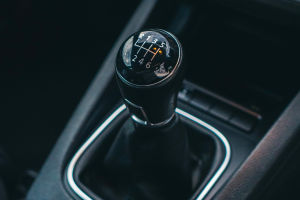Have you ever considered how the way you drive—and maintain your car—affects the planet? Sustainable driving isn't just a buzzword; it's a lifestyle choice that can make a real difference in reducing carbon emissions.
The good news is, you don't have to overhaul your whole life to start making a positive impact. Sometimes, small adjustments behind the wheel and smart use of technology are all it takes. Let's explore some practical tips and tools that help cut your car's carbon footprint while saving you money at the pump.
Eco-Driving: More Than Just Saving Gas
Eco-driving is about adopting habits that optimize fuel efficiency and minimize unnecessary emissions. It's surprisingly simple once you get into the groove:
1. Smooth Acceleration and Braking: Rapid acceleration and hard braking consume more fuel. Instead, accelerating gradually and anticipating stops helps the engine run efficiently. According to studies, adopting this can improve fuel economy by up to 20%.
2. Maintain a Steady Speed: Using cruise control on highways keeps your speed consistent, which reduces fuel use. Frequent speeding up and slowing down can waste fuel and increase emissions.
3. Avoid Idling: If you expect to be stopped for more than 10 seconds (except in traffic), turning off the engine saves fuel and cuts emissions. Idling can burn up to a half-gallon of fuel per hour unnecessarily.
4. Lighten Your Load: Extra weight means your engine works harder. Removing roof racks or heavy items inside the car can improve mileage, especially in city driving.
Vehicle Maintenance: The Hidden Fuel Saver
You might not realize it, but how well you maintain your car directly affects fuel efficiency and emissions:
• Tire Pressure: Under-inflated tires increase rolling resistance, lowering gas mileage by up to 3%. Regularly checking and inflating tires to the recommended level is a quick win.
• Regular Oil Changes: Fresh oil reduces engine friction, allowing smoother operation and better fuel economy.
• Air Filters: Dirty air filters restrict airflow, causing the engine to work harder and burn more fuel. Changing filters as recommended keeps your car running clean and efficient.
These simple maintenance steps not only reduce emissions but also extend your vehicle's life and save you money on fuel.
Hybrid and Energy-Saving Technologies: Smarter Cars for Cleaner Driving
Switching to hybrid vehicles is another effective way to shrink your carbon footprint without sacrificing convenience. Hybrids combine a traditional internal combustion engine with an electric motor, using regenerative braking and battery power to reduce fuel consumption.
According to the U.S. Department of Energy, hybrid cars can deliver 20-35% better fuel economy compared to conventional vehicles, depending on driving conditions. This means fewer emissions without the need to change your driving habits drastically.
Additionally, many modern cars now come equipped with features such as:
• Start-Stop Systems: Automatically turn off the engine at stops and restart it when you lift your foot off the brake.
• Eco Mode Driving: Adjusts throttle response and air conditioning to maximize efficiency.
These technologies work quietly in the background, optimizing energy use and helping you drive greener.
Leveraging Apps and Tools to Drive Smarter
Technology doesn't stop at your car. Several smartphone apps and onboard tools help drivers monitor and improve eco-driving habits:
1. Fuel Efficiency Trackers: Apps like Fuelio or Drivvo let you log your fuel consumption and maintenance costs, helping you spot inefficiencies and improve driving habits.
2. Eco-Driving Coaches: Some apps analyze your acceleration, braking, and speed patterns, offering real-time feedback to encourage smoother driving.
3. Route Optimization: Navigation apps with eco-routing options suggest the least fuel-consuming routes by considering traffic, road types, and stoplights.
By integrating these digital tools into your routine, you turn sustainable driving from guesswork into measurable, actionable progress.
Expert Perspective on Sustainable Driving
Dr. Lisa Martinez, an environmental scientist focusing on transportation emissions, explains, "Personal vehicles contribute a significant portion of global carbon emissions. While electric vehicles hold promise, immediate carbon reductions come from better driving habits and proper vehicle maintenance. Small changes across millions of drivers add up."
She further highlights, "Using apps to track and improve your driving creates awareness and motivation, which are crucial for long-term behavior change."
Now that you know how smoother driving, smarter maintenance, hybrid tech, and handy apps combine to reduce carbon footprints, which tip will you try first? Sustainable driving isn't about perfection—it's about progress. Every mile driven thoughtfully and every tool used wisely brings us closer to cleaner air and a healthier planet. So next time you hit the road, ask yourself: How can I drive smarter today?


